Bishop's Hat Epimedium × youngianum 'Merlin'

ABOUT
Epimedium × youngianum 'Merlin', often known as Bishop's hat, is a perennial plant that boasts a charming and ornamental appeal. This particular cultivar is admired for its delicate foliage and striking flowers. The leaves of 'Merlin' emerge with a vivid bronze-purple tinge during spring, creating a colorful tapestry that evolves throughout the growing season. As the leaves age, they gradually transition to a rich green, providing a contrasting backdrop for the blossoms. The real show-stoppers are the flowers of Bishop's hat, which burst forth in early to mid-spring. The blooms of 'Merlin' are particularly eye-catching, with their intricate structure and bold coloration. Each flower consists of a series of spurred petals that present an enchanting violet to pale blue hue, often with darker purple centers, adding a dash of dramatic flair. The blossoms dangle charmingly above the foliage, on wiry stems, appearing as if they are floating on air. This captivating groundcover adds a layer of enchantment to shaded garden areas, rockeries, or woodland settings. Its overall form is mounding, with a lush quality that fills in the spaces around it with texture and color. The foliage remains attractive throughout the summer and may turn to a subtler green or take on a reddish tinge in the fall, prolonging the plant's visual interest well beyond its flowering period. In summary, Epimedium × youngianum 'Merlin' presents a blend of attractive traits from its colorful, heart-shaped foliage to its whimsical, fairy-like flowers, offering year-round interest for the garden without the necessity of a grand stature.
About this plant
 Names
NamesFamily
Berberidaceae
Synonyms
Bishop's Hat, Fairy Wings, Young's Barrenwort
Common names
Epimedium × youngianum 'Merlin'.
 Toxicity
ToxicityTo humans
Bishop's hat, which includes the cultivar Epimedium × youngianum 'Merlin', is not commonly known for being toxic to humans. There is no significant evidence to suggest that this plant is poisonous or that it would cause adverse symptoms if ingested. However, as with any plant not typically used for human consumption, it is generally advisable for people to avoid ingesting parts of this plant as it may cause gastrointestinal discomfort or allergic reactions in susceptible individuals.
To pets
Bishop's hat, which includes the cultivar Epimedium × youngianum 'Merlin', is not commonly known for being toxic to pets. While there is no substantial information indicating that this plant would be harmful if pets were to consume it, caution is always recommended. Generally, pets should not be allowed to eat ornamental plants as they may cause digestive upset or an allergic reaction.
 Characteristics
CharacteristicsLife cycle
Perennials
Foliage type
Semi-deciduous
Color of leaves
Green
Flower color
Pink
Height
1 foot (30 cm)
Spread
1 foot (30 cm)
Plant type
Herb
Hardiness zones
5
Native area
Asia
Benefits
 General Benefits
General Benefits- Ornamental value: The plant has attractive foliage and delicate flowers that enhance the aesthetics of gardens and landscapes.
- Drought tolerance: Once established, it is relatively tolerant of dry conditions, requiring minimal irrigation in suitable climates.
- Shade tolerance: It can thrive in partially shaded areas where other plants may not grow well, thus filling in difficult garden spots.
- Groundcover: It forms a dense mat, which can help suppress weeds and reduce garden maintenance.
- Seasonal interest: It provides visual interest across multiple seasons with its changing foliage and blossoms.
- Wildlife attraction: The flowers can attract pollinators such as bees and butterflies, thereby supporting local ecosystems.
- Hardiness: This hybrid is generally resilient and can withstand winter temperatures in colder climates without significant damage.
- Low maintenance: It does not require frequent care, making it a convenient choice for gardeners with limited time.
 Medical Properties
Medical PropertiesThis plant is not used for medical purposes.
 Air-purifying Qualities
Air-purifying QualitiesThis plant is not specifically known for air purifying qualities.
 Other Uses
Other Uses- Groundcover: Epimedium 'Merlin', commonly known as bishop's hat, can be used to cover bare spots in the garden due to its dense foliage, creating an attractive green carpet.
- Erosion Control: Its root system helps stabilize soil on slopes, preventing soil erosion in areas with inclines or uneven terrain.
- Border Planting: The compact growth habit of bishop's hat makes it suitable for defining the edges of garden beds or pathways.
- Shade Gardening: Bishop's hat flourishes in shady gardens where other plants may struggle to thrive, offering a lush ground cover in low light conditions.
- Natural Dye: Some enthusiasts use the leaves of bishop's hat to create natural dyes for fabrics, though this use is less documented and may require experimentation.
- Winter Interest: With some varieties maintaining their foliage in mild winters, bishop's hat can add greenery and texture to an otherwise barren winter landscape.
- Container Gardening: Because of its modest size and ornamental appeal, bishop's hat can be grown in containers to decorate patios or balconies.
- Wildlife Habitat: The dense foliage provides shelter and breeding spots for small beneficial insects, contributing to biodiversity in the garden.
- Fairy Gardens: Due to its delicate appearance, bishop's hat is often used in whimsical fairy garden designs, adding a touch of enchantment.
- Underplanting: Bishop's hat can be used as underplanting for taller plants or trees, taking advantage of its tolerance for shade and adding layers of interest to the garden.
Interesting Facts
 Feng Shui
Feng ShuiThe Bishop's Hat is not used in Feng Shui practice.
 Zodiac Sign Compitability
Zodiac Sign CompitabilityThe Bishop's Hat is not used in astrology practice.
 Plant Symbolism
Plant Symbolism- Love: The Epimedium × youngianum 'Merlin', commonly known as "Bishop's Hat," often denotes a symbol of love and is believed to bring a magic touch to romantic pursuits, akin to the wizard Merlin from Arthurian legend.
- Vitality: With its vigorous growth and resilience, Bishop's Hat is often associated with vitality and the ability to thrive in varied conditions, reflecting a spirit of robustness and health.
- Protection: The plant's connection to the famed wizard Merlin also imparts a sense of protection and safety, symbolizing the guarding of one's physical and emotional space.
- Youthfulness: Its lush foliage and enduring blooms give the Bishop's Hat a link to youth and rejuvenation, suggesting a fountain of youthfulness in the garden space.
- Fertility: Bishop's Hat is said to be a symbol of fertility, with its capacity to spread and fill spaces in the garden, encouraging abundance and proliferation.
 Water
WaterThe Bishop's Hat should be watered regularly to keep the soil consistently moist, but not waterlogged. During the growing season in spring and summer, water thoroughly once a week, providing about 1 to 1.5 gallons per square yard of soil. In the fall and winter, reduce watering to every other week, depending on rainfall and temperature, as the plant requires less moisture during dormancy. Ensure good drainage to prevent root rot. Adjust frequency if rainfall is sufficient to maintain moisture levels.
 Light
LightBishop's Hat thrives in partial to full shade conditions. It should be planted in a location that receives filtered sunlight or light shade throughout the day. Avoid exposing it to intense midday sun, as this can scorch the foliage. A spot under a canopy of trees or on the north side of a building is ideal for this plant.
 Temperature
TemperatureBishop's Hat prefers temperatures between 50°F to 75°F. While it can tolerate a range of temperatures, the plant is hardy in USDA zones 5 to 9, which means it can survive minimum winter temperatures down to -20°F. Ideally, it should not be exposed to extended periods of heat above 80°F for optimal growth.
 Pruning
PruningPrune Bishop's Hat to remove dead or damaged foliage, maintain shape, and promote denser growth. The best time for pruning is late winter or early spring, just before new growth starts. Cutting back the plant every few years encourages rejuvenation. Prune sparingly, as excessive pruning can reduce flowering.
 Cleaning
CleaningAs needed
 Soil
SoilBishop's hat prefers well-drained, humus-rich soil with a pH between 5.5 and 7.5. A mix of garden soil, compost, and perlite or pine bark can provide the ideal structure and fertility.
 Repotting
RepottingBishop's hat does not require frequent repotting, typically every 2-3 years or when it outgrows its container.
 Humidity & Misting
Humidity & MistingBishop's hat thrives in average household humidity levels; however, it appreciates a slightly humid environment, especially when grown indoors.
 Suitable locations
Suitable locationsIndoor
Ensure bright, indirect light and room temperature.
Outdoor
Plant in partial shade, sheltered from strong winds.
Hardiness zone
5-9 USDA
 Life cycle
Life cycleEpimedium × youngianum 'Merlin', commonly known as Bishop's Hat, begins its life cycle as a seed, which, once sown, germinates in moist, well-drained soil in a shaded area. Seedlings emerge and establish a robust root system, forming a clump that gradually expands through rhizomatous growth. In early spring, heart-shaped leaves unfold, often with a bronze tint, followed by the unique spur-shaped purple flowers that rise above the foliage on slender stems. After blooming in late spring to early summer, the plant enters a phase of vegetative growth where the foliage matures to a lush green and provides ground cover throughout the summer. As autumn approaches, the foliage may take on a reddish tinge. In winter, the plant becomes dormant, with some leaves remaining evergreen in milder climates, and the cycle begins anew with the return of spring growth.
 Propogation
PropogationPropogation time
Early spring
The most popular method of propagating Epimedium × youngianum 'Merlin', commonly known as Young's barrenwort or Bishop's Hat, is by division. This is typically done in late summer to early fall, after the flowering season has concluded or in early spring before new growth begins. It involves carefully lifting the plant from the ground and gently separating the clumps into smaller sections, ensuring that each new section has a portion of the root system and several growth points. These divisions are then replanted at the same depth they were originally growing at, spaced approximately 12 to 15 inches (30 to 38 cm) apart to allow sufficient room for growth. The divisions should be watered thoroughly after planting to help establish them in their new locations.

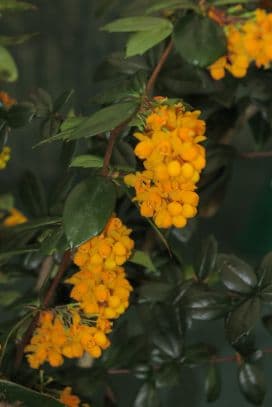
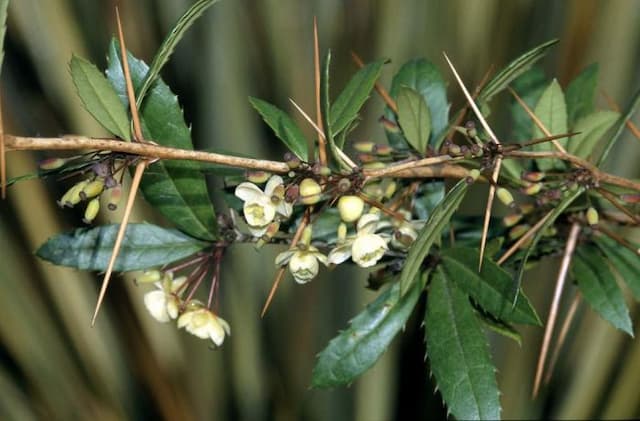
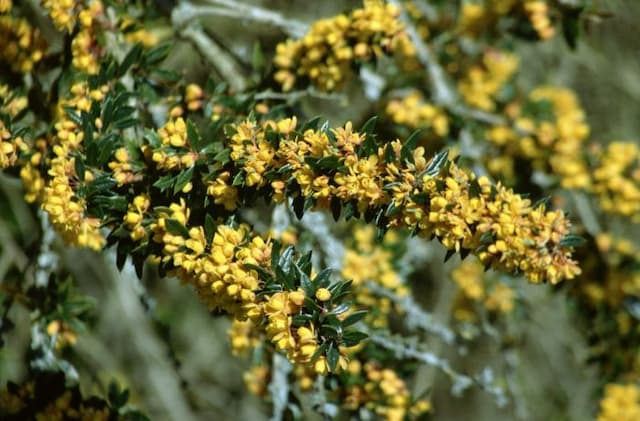
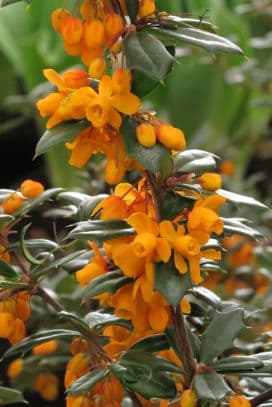
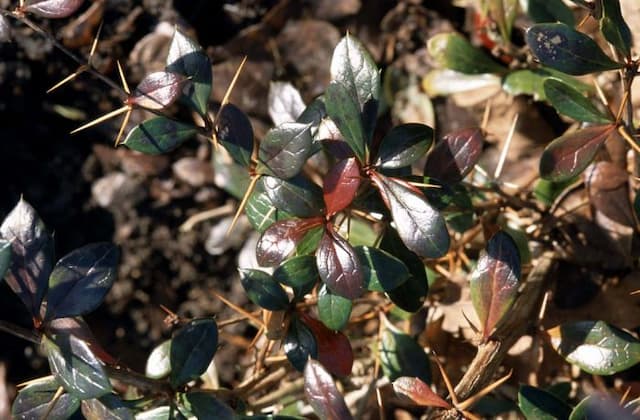


![Japanese barberry [Bonanza Gold]](/_next/image?url=https%3A%2F%2Fplants-admin.emdemapps.com%2Fimages%2Fplants%2F%2Fimages%2F604b5385e413f.png&w=640&q=75)
